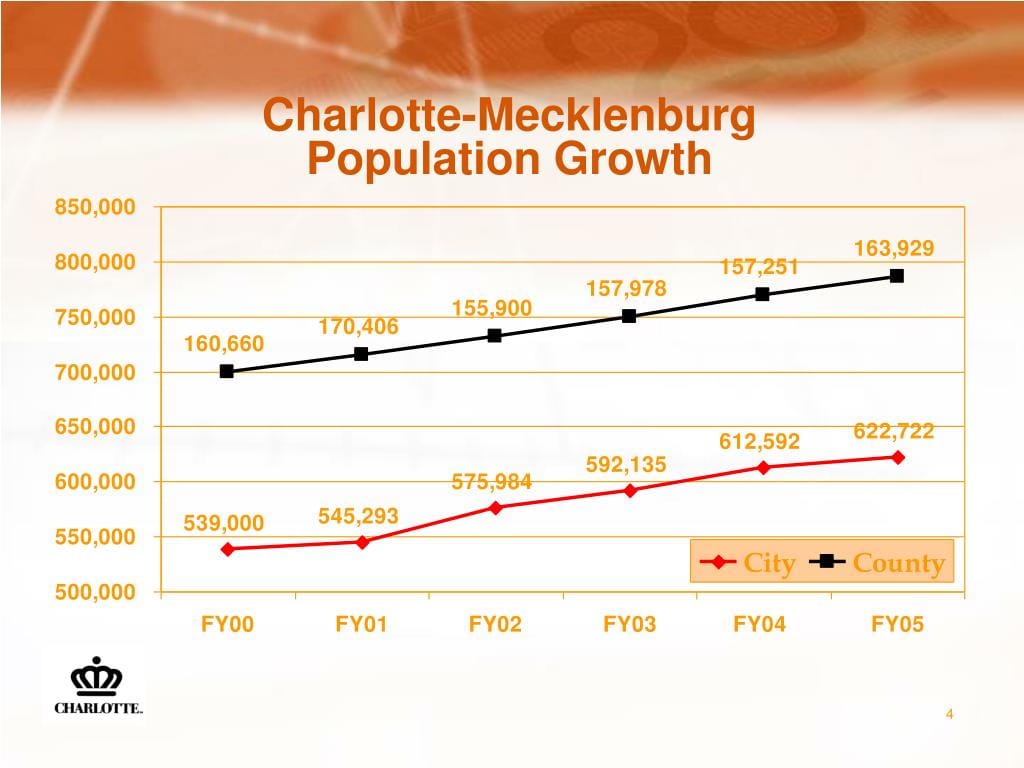Charlotte, NC: Analyzing the Queen City’s Rise to the Top 15
Charlotte’s population boom is making headlines. The Queen City has been steadily growing for years, attracting people from all walks of life. But what’s fueling this surge, and how is it shaping the city?
Let’s start with a trip back in time. Long before skyscrapers painted the skyline, Native American tribes, including the Catawba Nation, called this area home. European settlers and waves of immigrants followed, weaving a rich tapestry of cultures. This vibrant history laid the foundation for the diverse Charlotte we know today.
Now, Charlotte boasts almost 900,000 residents, securing its spot as one of the largest cities in the US. The driving force? Opportunity. A robust economy, particularly in finance, translates to jobs, attracting those seeking a fresh start or career advancement.
But it’s more than just dollars and cents. Charlotte offers a quality of life that’s hard to beat. From the bustling Uptown to charming neighborhoods, there’s something for everyone. And let’s not forget the thriving culinary scene!
Charlotte is also becoming more diverse, with significant growth in minority populations. Millennials, too, are drawn to the city’s energy and opportunities, influencing everything from the housing market to job trends.
This growth extends beyond the city center. Charlotte’s suburbs are experiencing a population surge as well, as people seek more space and top-rated schools.
What’s Fueling the Boom? Unpacking Charlotte’s Population Surge
So, we’ve established that Charlotte is growing rapidly. The latest numbers show it’s now the 15th largest city in the U.S., surpassing San Francisco with over 911,000 residents as of 2024.
But what’s behind this population magnet?
It boils down to opportunity. People from across the country, and even the world, are flocking to Charlotte for a chance at a better life. The city offers a thriving job market, especially in sectors like banking and finance.
But it’s not just about the paycheck. Charlotte has blossomed into a hub for young professionals and families seeking a vibrant yet affordable city. Compared to pricey coastal cities, Charlotte offers a similar buzz – with cool restaurants, arts, and culture – but without the exorbitant cost of living.
And let’s not forget about the allure of the suburbs! As Charlotte’s population swells, the surrounding areas are also expanding, offering families more space, excellent schools, and a close-knit community feel.
While this growth is a boon for the city’s economy, it also presents challenges. More people mean a greater need for housing, schools, roads, and infrastructure. City planners face the complex task of accommodating this influx while preserving what makes Charlotte special. Affordable housing, efficient transportation, and fostering a welcoming, inclusive environment for all are top priorities.
Charlotte’s Population in 2024: A Closer Look at the Numbers
Experts suggest that by 2024, Charlotte’s population will likely reach around 923,164, making it the largest city in North Carolina. It may even climb to the 15th largest city in the US, surpassing San Francisco! That’s nearly double the population from the year 2000!
Why the hype about Charlotte? There are several contributing factors. The job market, especially in finance – with giants like Bank of America and Truist Financial – is booming, attracting a large workforce. Charlotte also possesses a unique blend of big-city energy and Southern charm. It boasts arts and culture, professional sports teams (the Panthers and Hornets), and ample outdoor recreation opportunities. And while prices are rising everywhere, Charlotte remains relatively affordable compared to some coastal cities.
However, rapid growth presents its own set of challenges. More people mean increased traffic congestion, a greater need for housing, and pressure on schools and hospitals.
Charlotte will need to implement innovative solutions to ensure sufficient affordable housing, manage traffic flow, and maintain its high quality of life for all residents.
Looking ahead, most projections indicate continued growth for Charlotte. Some even predict a population of 2.7 million by 2030! It will be fascinating to witness how Charlotte navigates these growing pains while preserving its unique character.
For more updated statistics on the city’s demographics, check out the Greenville, SC demographics page. If you are interested in the population of Hattiesburg, MS, click here.
- Unlock Water’s Symbolism: A Cross-Cultural Exploration - April 20, 2025
- Identify Black and White Snakes: Venomous or Harmless? - April 20, 2025
- Unlocking Potential: Origins High School’s NYC Story - April 20, 2025














